Power Colors
CURATED BY AMANDA SMITH
MAY 10TH - JUNE 21ST, 2019
Red for power, yellow for happy, blue for competence; Power Colors, curated by Amanda Smith and Angela Zonunpari, examines the associative influence of color and its links to history, identity, and authority. Using a wide range of production skills, the four artists in the exhibition articulate and reconstitute fragmented experiences of place, personhood, and politics in vivid color.
Marsha Mack (Denver, CO) and Nicole Maloof (Bronx, NY) use the color yellow as a lynchpin in their investigations of how cultural identity is shaped by language, social customs, and economic systems. For Maloof, that investigation begins with a simple question: What color is a banana?. Mack’s approach to creating objects, images, and installation that reframe the experience of her Vietnamese heritage through the lens of a tourist, is equally pointed. Amy Jarding’s (Sioux Falls, SD) intuitive use of color in her fiber-based work serves as lively counterpoint to these research driven practices, while Amanda Smith’s (Omaha, NE) highly personal sense of color, space, and vision recalls “past lives” through the process of revisiting old paintings and reworking them as quilts; new objects, steeped in cultural tradition, that become carefully constructed retrospective heirlooms.
Installation Images





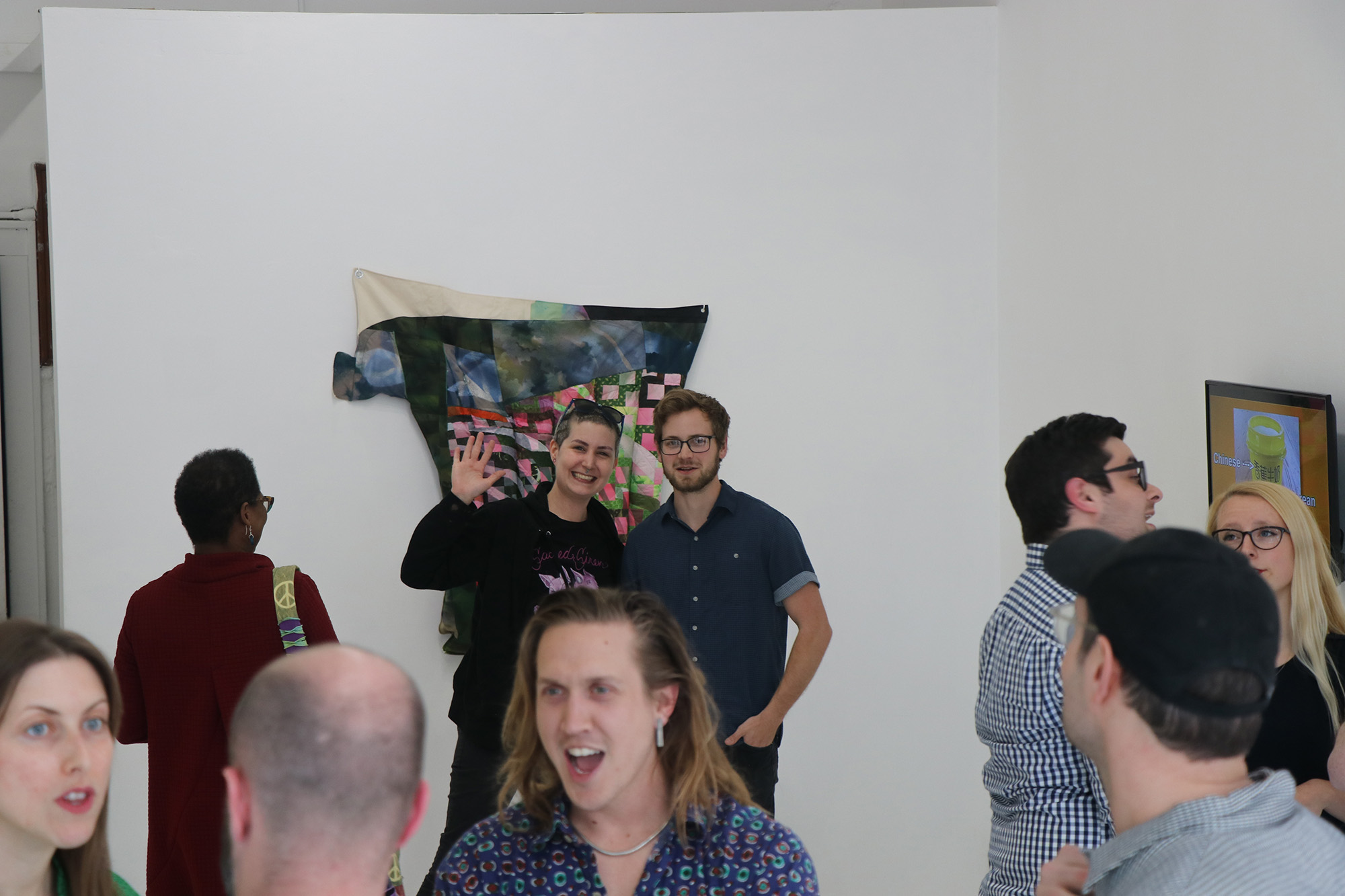

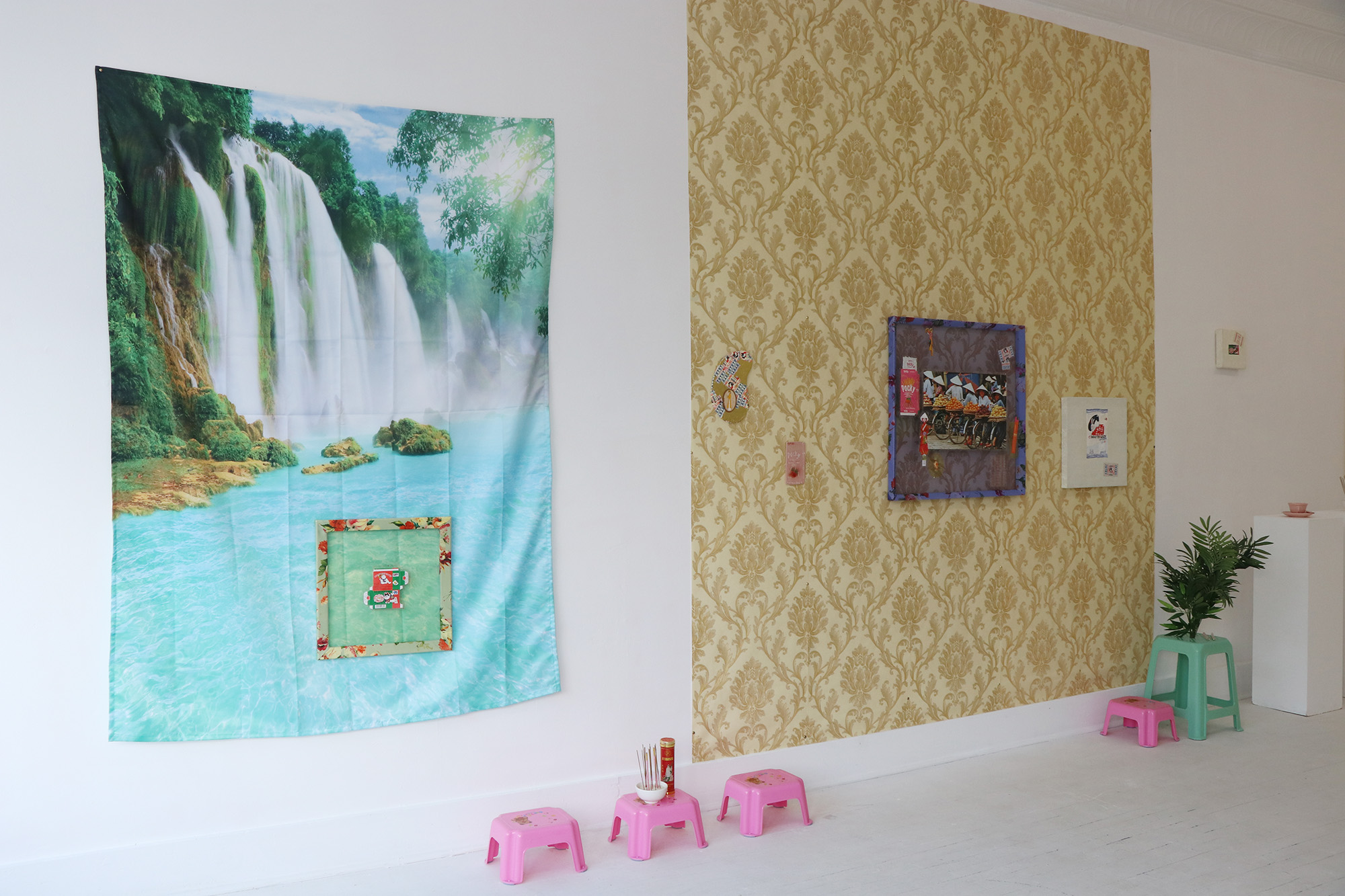
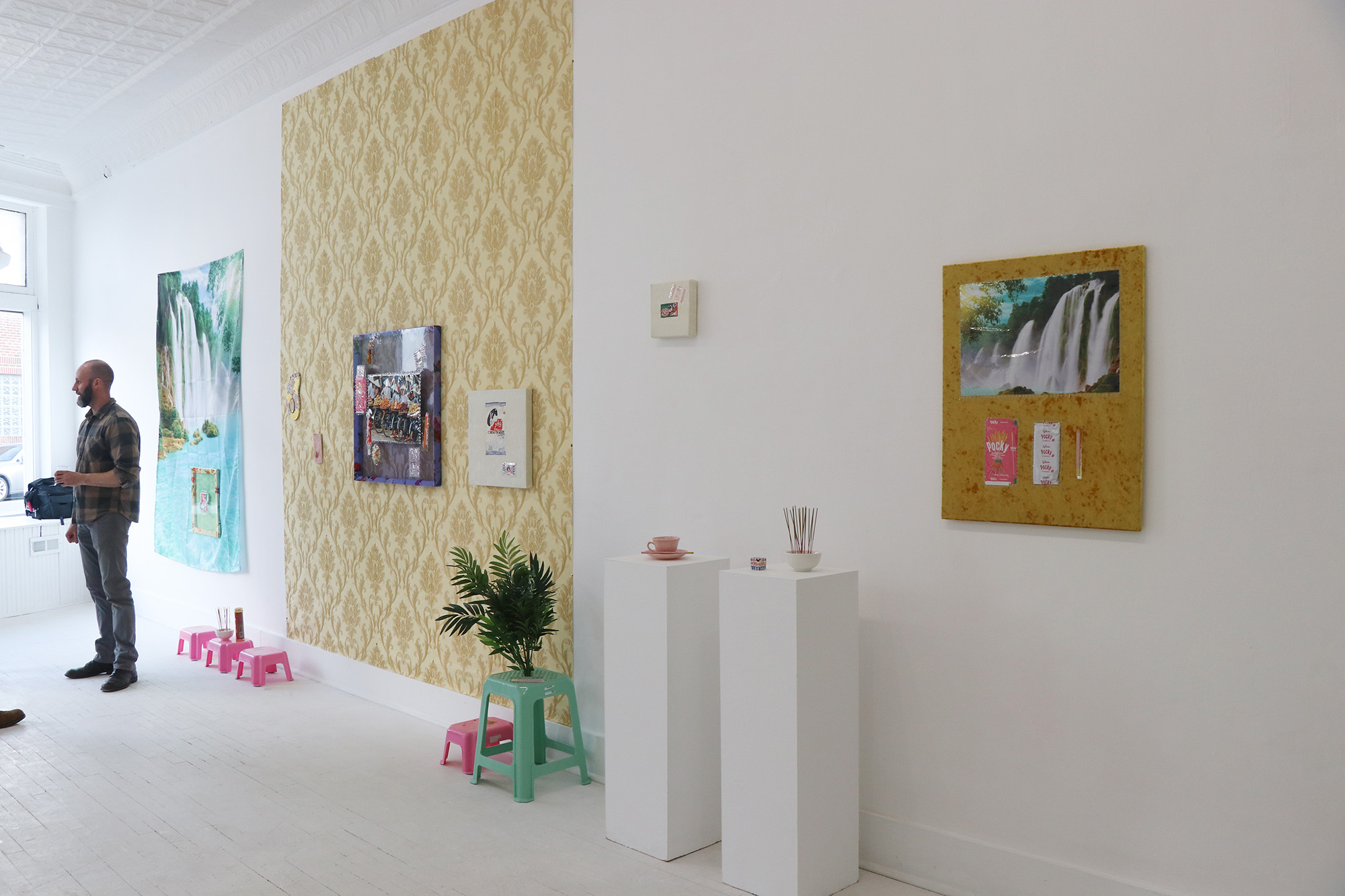
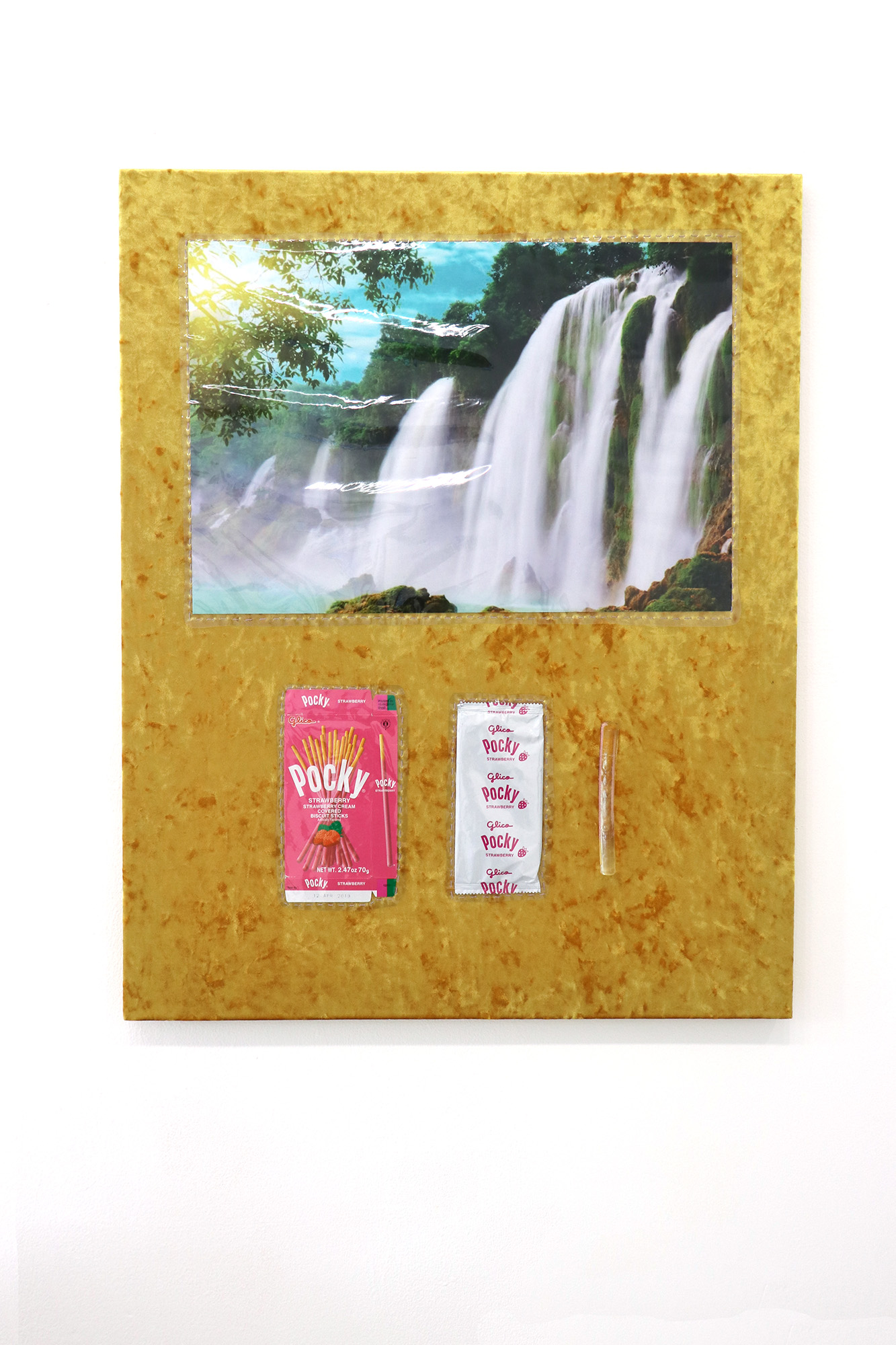

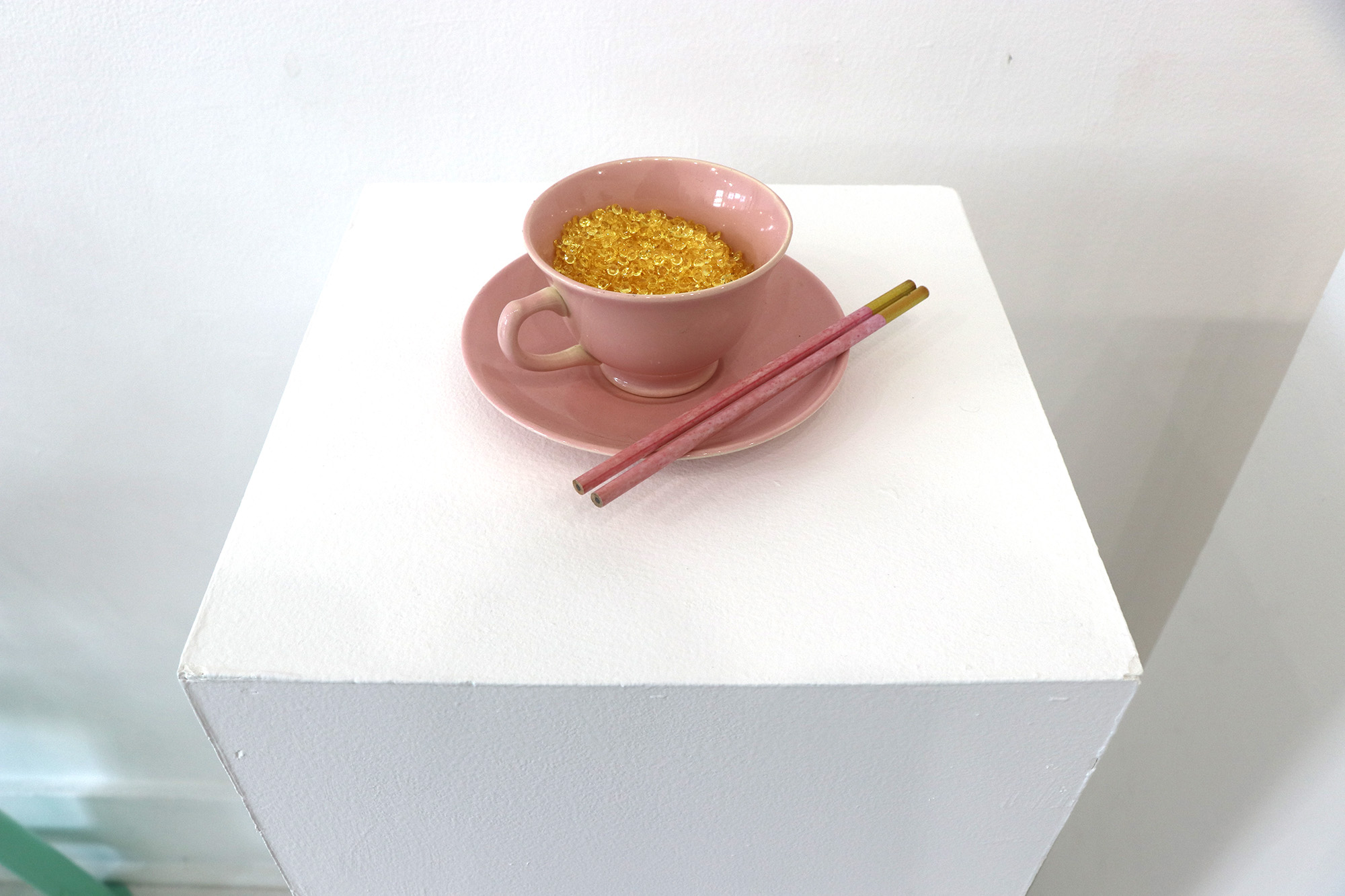
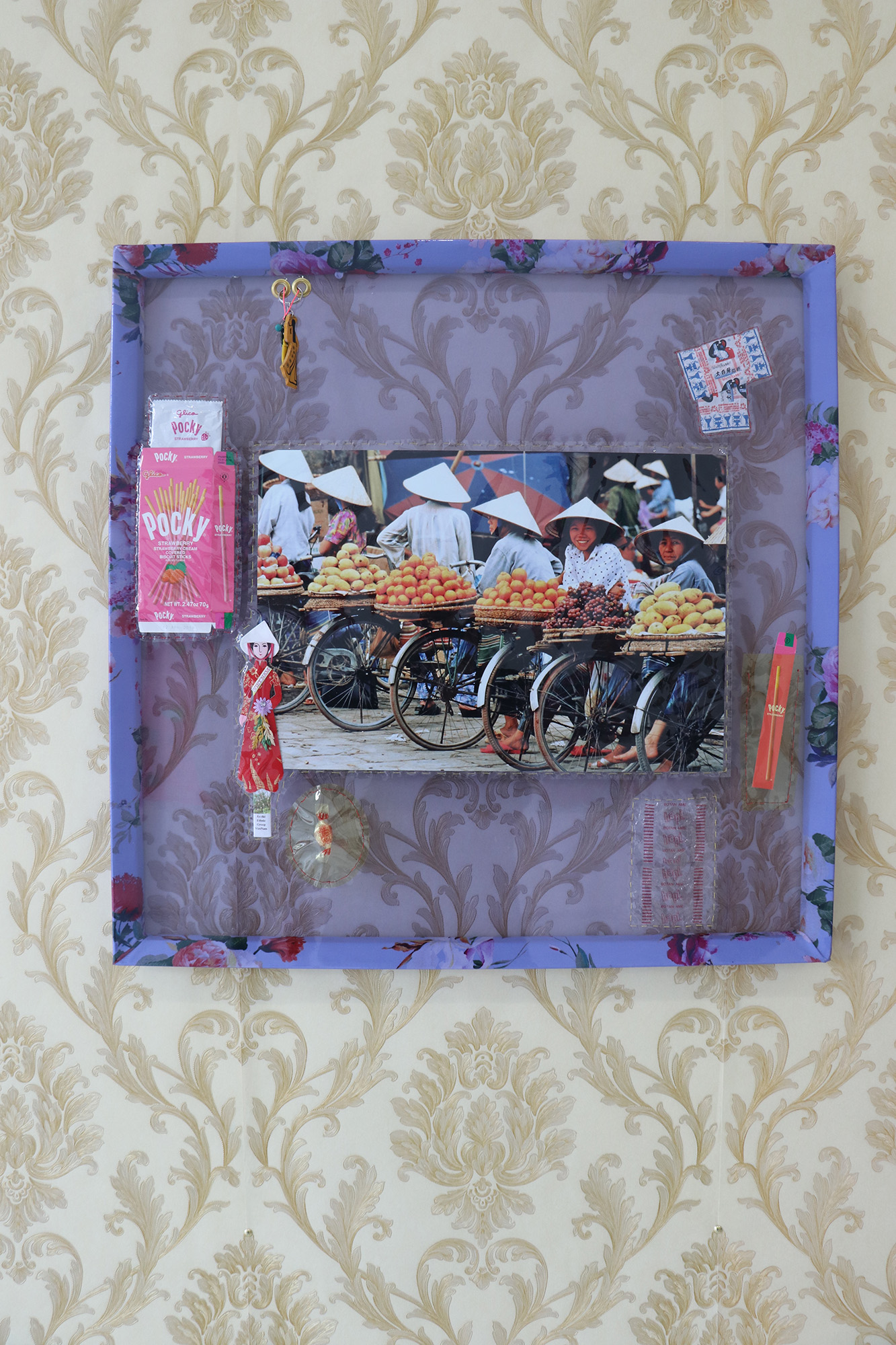
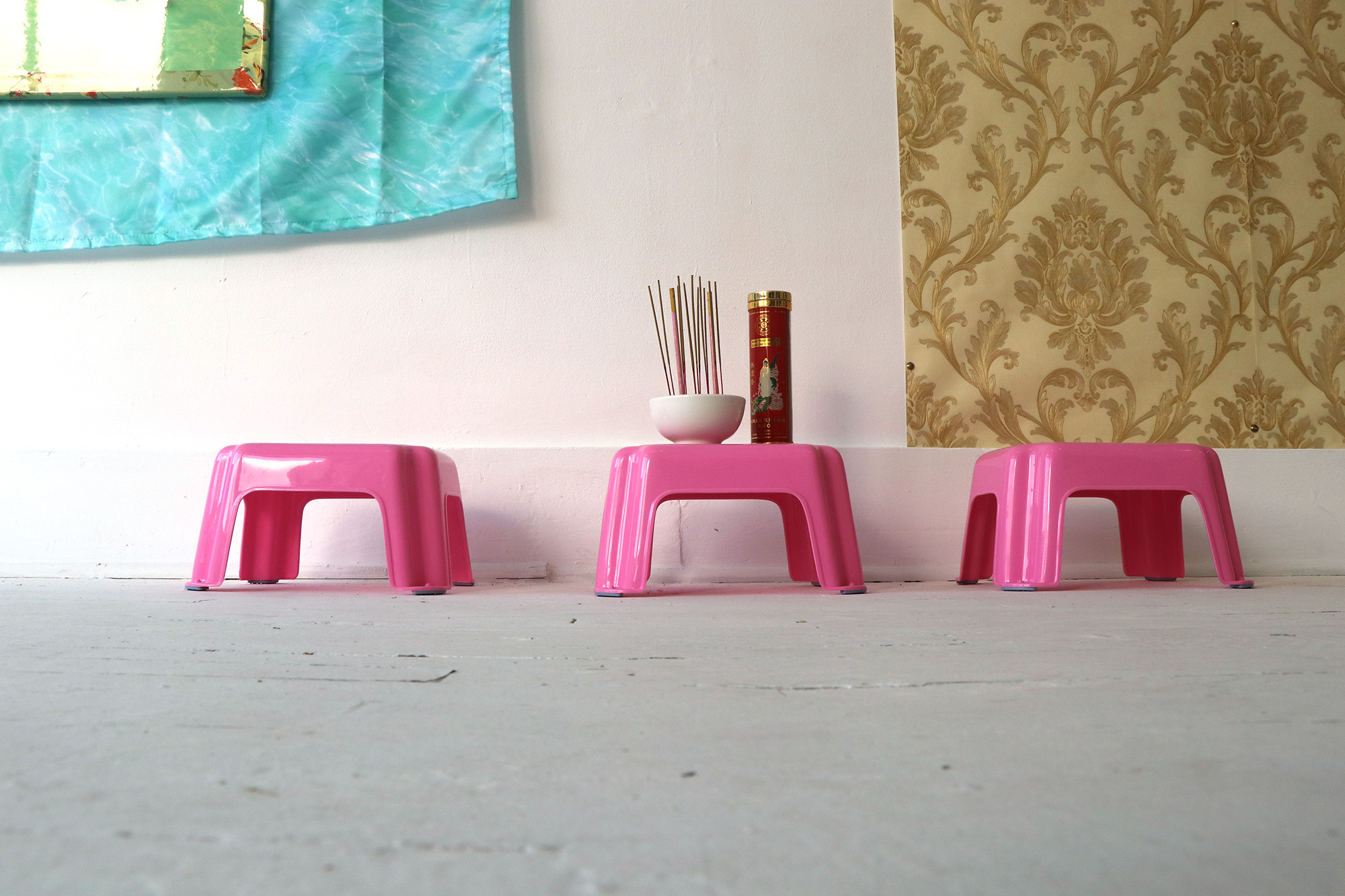


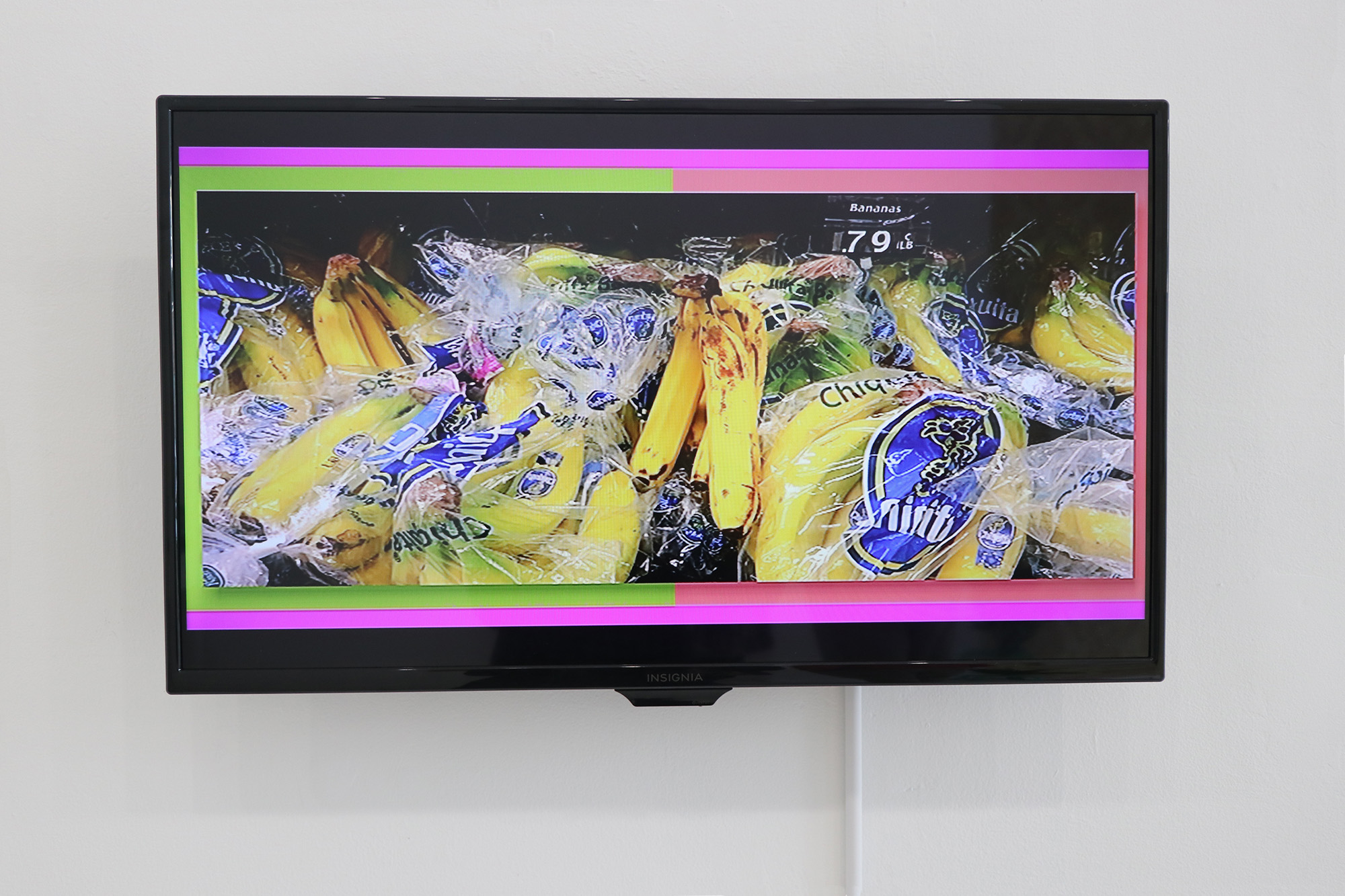

About the Artists
Amy Jarding is a visual artist based in Sioux Falls, SD. Graduating from the University of South Dakota with a BA in English and History, Jarding did not begin her artistic practice until she was well into her 20's. This exploration has grown into a dedicated venture that is one of both immersion and inspection. Her current work has focused on frame loom weaving, a meditative process of creating both large and small scale pieces that explore the relationship of shape and color in a painterly way. Bright pops of color and small hints of humor offer the viewer their own experience within each piece. Hailing praise towards process, Jarding finds the creative development of her work just as important as the completed piece.
Marsha Mack holds an MFA and a Certificate of Advanced Study in Women's and Gender Studies from Syracuse University, and a BFA from San Francisco State University. Mack's texturally rich, process-intensive sculptures and performances focus on decadence, decoration, and beauty, with an emphasis on materiality. Aesthetically a maximalist, Mack is a firm believer that more is more. With materials ranging from ceramic to cream cheese frosting, ideas are pursued through layered textures, colors, and sensory experiences. Frequently leaning on feminist theory and social critique for conceptual grounding, Mack's approach honors playfulness and introspection as equals. Marsha is currently a ceramics instructor at Foothills Park and Recreation District (Littleton, CO), the Associate Director of David B. Smith Gallery (Denver, CO), and is an artist in residence at RedLine Contemporary Art Center (Denver, CO).
Nicole Maloof works within an interdisciplinary art practice, encompassing drawing, printmaking, and video. Through these mediums, Maloof challenges and explores the artifice of categorical boundaries, and by extension, the social relations that they express. Maloof’s drawings and 2D works explore interpersonal relationships and anxieties connected to the body, often addressed through the use of humor. Maloof’s videos investigate what it means to know—is it possible to trust conventional disciplines and institutions of knowledge, let alone our own individual sensory input and resulting memories? This set of inquiries stems from the artist’s own background and diverse experiences. Born in Korea and raised in Massachusetts, Maloof received a BFA in painting and a BA in chemistry from Boston University. After graduation, Maloof worked on organic chemistry research at Harvard University, taught in Korea for two years on a Fulbright teaching grant, and then moved to New York, where she earned her MFA in the visual arts from Columbia University. Maloof lives and works in New York, and is currently a Visiting Assistant Professor of Art at Sarah Lawrence College for the 2018-2019 academic year.
Amanda Smith is a painter who has also recently begun working with quilt and textiles. Smith earned her MFA from the University of Nebraska-Lincoln, and her BA from the University of Puget Sound in Tacoma, WA. She has exhibited and lectured nationally and internationally, with exhibitions in New York, Kansas City, Houston, the Twin Cities, Miami and Seattle metros, and Chile. She was a visiting artist at Temple University, Rome, Italy, and has been an artist-in-residence at Fljótstunga in Iceland, the Kimmel Harding Nelson Center, Arrowmont Pentaculum, Art 342 in Fort Collins, with upcoming residencies at Monson Arts in Maine and Est-Nord-Est in Quebec. You can find more of her work on her website, amandasmithart.com
Angela Zonunpari is an arts writer, based in Sioux Falls, SD. She moved to the United States from India in 2013 to get a masters in arts journalism from Syracuse University, NY. Over the years, she's written about visual arts, music, dance, opera, theatre, and comedy. Zonunpari worked with multiple arts and community organizations while living in New York, including Rubin Museum of Art, artnet News, BRIC Arts | Media, and Bonhams Auctioneers. She now spends her time at Fresh Produce, an advertising agency in downtown Sioux Falls with a unique creative approach. The agency houses Ipso Gallery, an art space that promotes ideas and creative thinking, while curating distinct art experiences for the community. Zonunpari plays a significant role in supporting the curator and gallery director of Ipso, in community outreach, media relations, and more recently, curation. Outside of work, she publishes an annual series of art zines focusing on concepts and interactions with art. This year, Zonunpari and her collaborators are set to launch No Business Magazine with hopes that art conversations don't start with — "How much is it?"

